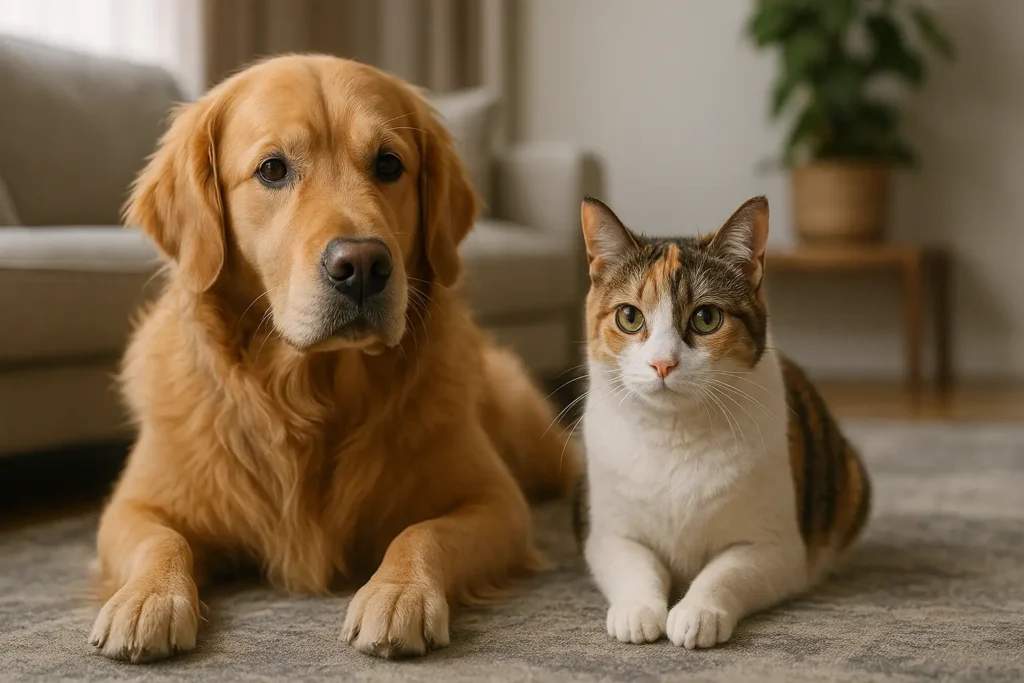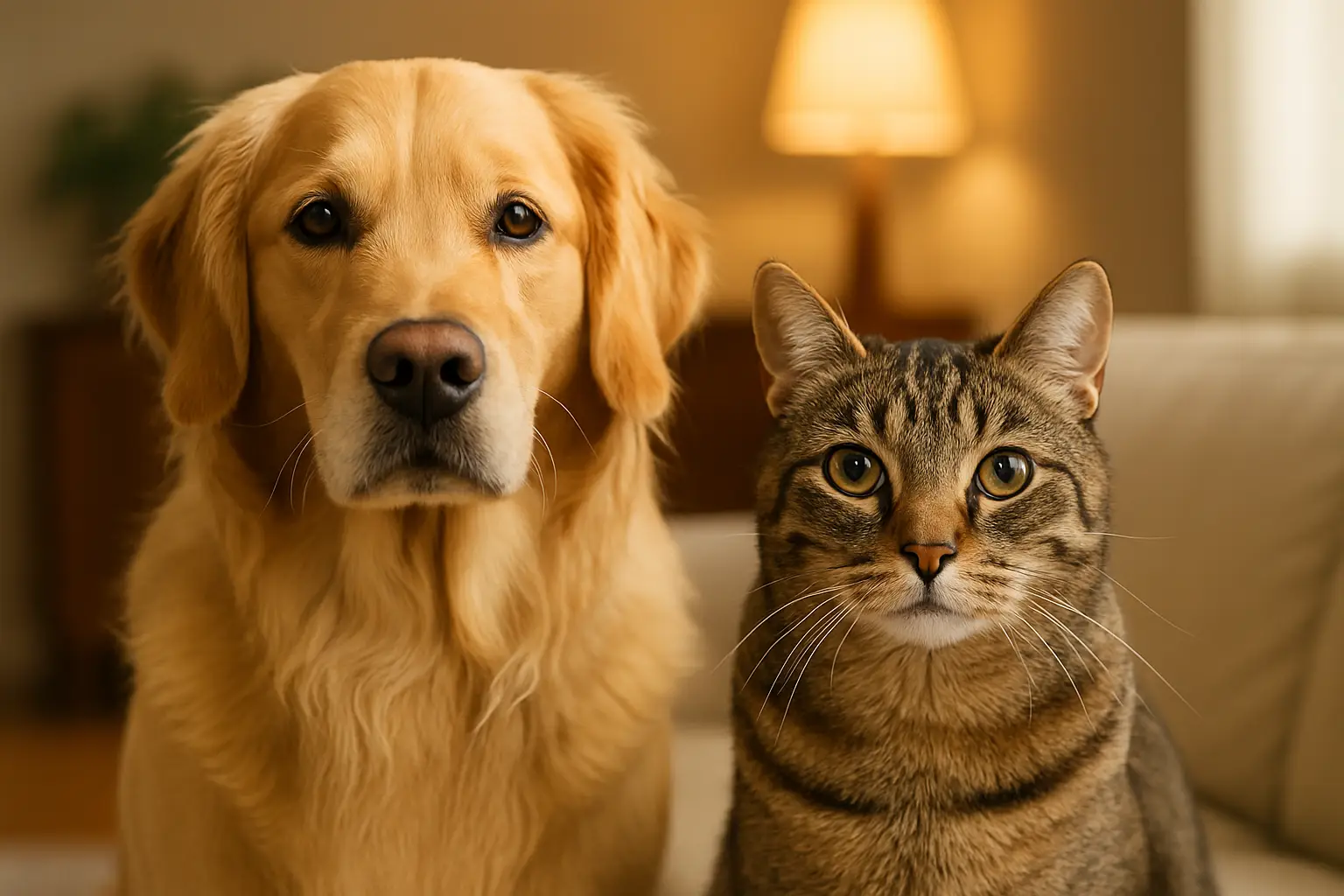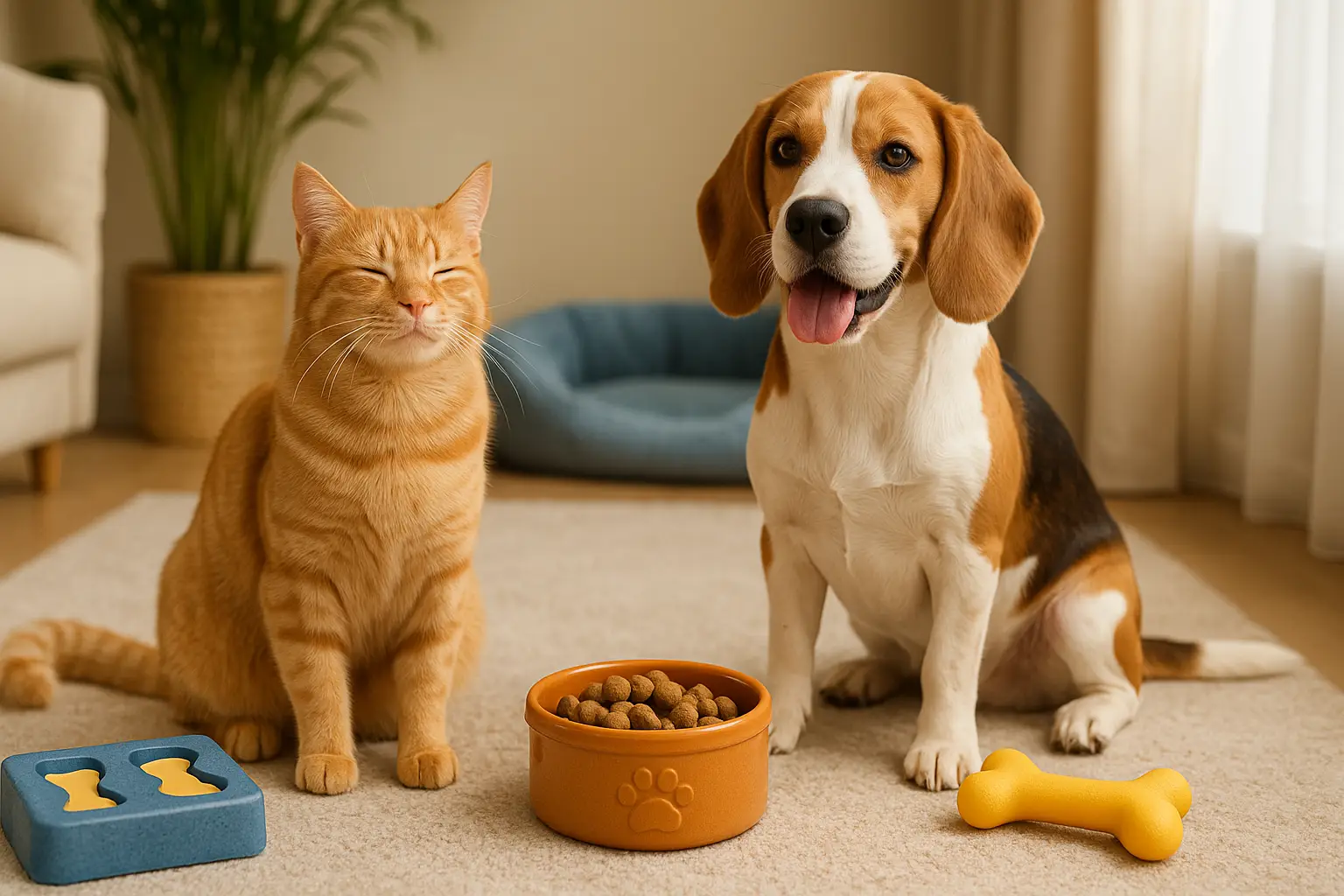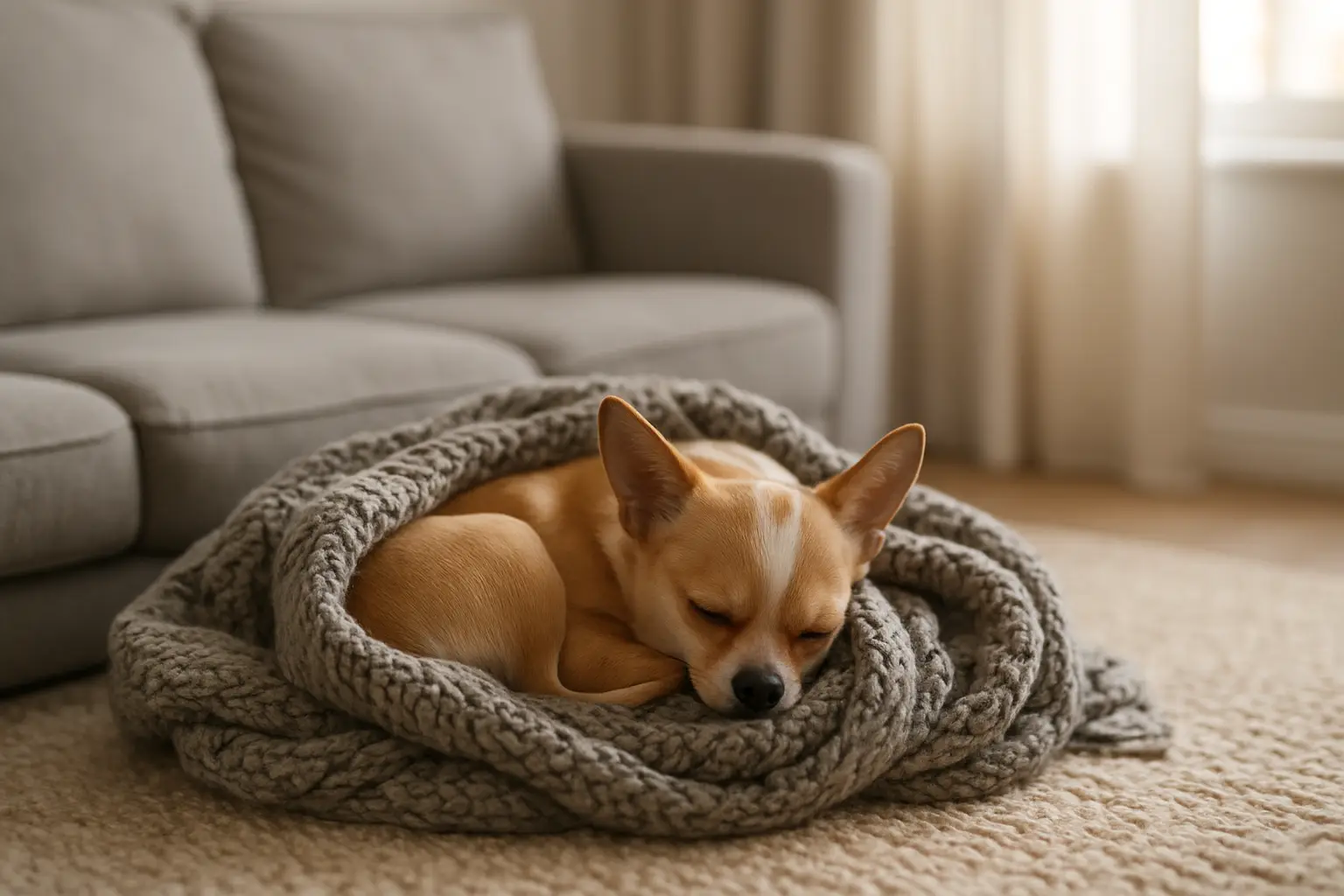How to Recognize and Support Your Pet’s Personality
Every pet is unique. Just like people, dogs and cats have individual personalities that shape the way they move through the world. Some are bold and energetic; others are shy, thoughtful, or fiercely independent. Understanding your pet’s personality is the foundation for building a meaningful, respectful, and balanced relationship.
When you tailor your home, routine, and expectations to fit your pet’s natural temperament, everything improves—behavior, communication, trust, and emotional well-being.
In this in-depth guide, we’ll explore how to identify different pet personality types, how they influence behavior, and what you can do daily to support the wonderful individual that shares your life.

Why Personality Matters in Pets
Understanding personality goes beyond knowing what toys your pet likes. It affects:
- How they respond to training
- What kind of stimulation they need
- Their preferred style of affection or play
- How they manage stress or new environments
- Their ability to socialize or adapt to change
When pets are misunderstood, they often feel frustrated, fearful, or shut down. When they’re seen and supported, they thrive.
Step 1: Observe Without Interpreting Too Quickly
Before labeling your pet as “stubborn” or “needy,” take a step back and watch with curiosity.
Observe Their:
- Energy levels throughout the day
- Reactions to strangers, loud sounds, or new environments
- Social habits with people and other animals
- Preference for independent vs. interactive activities
- Response to routine changes or stimulation
Avoid assumptions. Personality reveals itself over time through patterns.
Step 2: Identify Common Pet Personality Types
While every animal is unique, certain personality patterns tend to emerge. Here are six common types in both dogs and cats.
1. The Social Butterfly
Loves people, enjoys visitors, thrives on interaction.
- Craves affection and closeness
- Enjoys being the center of attention
- Often gets along with other pets
Needs: Companionship, varied social time, gentle boundaries
2. The Independent Thinker
Loyal but self-directed. Enjoys alone time.
- May ignore commands when uninterested
- Often cat-like in behavior (even in dogs)
- Prefers quiet interaction
Needs: Space, respect for autonomy, predictable routine
3. The Nervous Nurturer
Sensitive and tuned in to human emotions.
- May follow you constantly
- Prone to anxiety or startle responses
- Very affectionate once comfortable
Needs: Safety, emotional consistency, soothing environments
4. The Explorer
Curious and confident. Always sniffing, climbing, or searching.
- May dart outdoors or scale furniture
- Loves new smells, textures, and places
- Prone to mischief when bored
Needs: Daily stimulation, safe exploration, training
5. The Laid-Back Lounger
Chill and easygoing. Sleeps a lot, moves slowly.
- Often mistaken for “lazy”
- Very predictable and low-maintenance
- May ignore toys or play invitations
Needs: Gentle encouragement, affection on their terms, comfort
6. The Performer
High-energy and eager to impress.
- Loves praise, training, and tricks
- Can get hyper or demanding
- Very food or toy motivated
Needs: Daily tasks, engagement, mental challenge
Your pet may be a mix of several types—that’s normal.
Step 3: Match Your Pet’s Personality With Their Environment
Once you’ve identified their general type, adapt your home life accordingly.
For Social Pets:
- Allow safe access to visitors or outings
- Offer plenty of touch and eye contact
- Create social routines (greeting rituals, games)
For Independent Pets:
- Provide quiet nooks and hideaways
- Respect their signals for solitude
- Use low-pressure training and affection
For Sensitive Pets:
- Minimize loud noises and chaos
- Stick to familiar routines
- Offer soothing voice tones and calming rituals
For Energetic Explorers:
- Rotate toys weekly
- Add puzzle feeders and DIY games
- Supervise outdoor exploration (or add catios!)
For Chill Pets:
- Avoid overstimulation
- Keep beds warm and cozy
- Use low-key enrichment (scent-based, slow-paced)
For Performers:
- Use daily trick or training time
- Offer complex enrichment toys
- Celebrate success with rewards and praise
Step 4: Customize Training Approaches
Training is not one-size-fits-all. Each personality needs a different approach.
Tips:
- High-energy pets may need short, fast-paced sessions
- Shy or sensitive pets need quiet, calm voice tones and small steps
- Independent pets do best with clear rewards and fewer repetitions
- Social pets learn well with interactive praise or group settings
Adapt your tone, timing, and reinforcement to your pet—not to the textbook.
Step 5: Adjust Socialization Strategies
Personality heavily influences how pets handle social environments.
Social or Outgoing Pets:
- May love walks in busy areas, group play, or visitor interaction
- Thrive with new faces (as long as it’s structured)
Shy or Nervous Pets:
- Need slow introductions with space
- May do better with one-on-one time or smaller settings
- Should never be forced into interactions
Curious or Independent Pets:
- Like to watch first, then engage
- Enjoy social play, but on their terms
- Should have “opt-out” space during gatherings
Step 6: Respect Individual Boundaries
One of the clearest signs of personality is how pets set and test boundaries.
Watch For:
- How they signal “no” (turning away, tail flick, backing up)
- How they request engagement (nudging, vocalizing, eye contact)
- What overstimulation looks like (panting, hiding, leaving the room)
Support their autonomy. The more respected they feel, the more connected they’ll become.
Step 7: Support Stress Recovery Based on Personality
Each personality needs something different after stress or excitement.
Social Pets:
- Benefit from cuddling or verbal reassurance
- May want to “talk it out” (barking, meowing)
Independent Pets:
- Need alone time and silence
- May hide or sleep to reset
Sensitive Pets:
- Prefer low lights, soft tones, and known rituals
- May seek your lap but flinch at loud sounds
Active Pets:
- Need physical decompression (chewing, digging, walking)
- Benefit from slow transitions to calm
Step 8: Provide the Right Type of Enrichment
Enrichment isn’t just about activity—it’s about personality fit.
Ideas by Type:
- Performers: Agility courses, fetch with variations, treat puzzles
- Explorers: Scent trails, cardboard mazes, balcony views
- Sensitive Pets: Soft-textured toys, gentle brushing, hide-and-seek
- Chill Types: Warm blankets, mellow music, low-light rooms
- Social Pets: Co-play, training with praise, visits to calm pet cafés
- Independent Types: Solo toys, windowsill bird-watching, puzzle feeders
Don’t just entertain—engage according to their emotional needs.
Step 9: Be Flexible With Routine Design
Not all pets want high structure—and some absolutely do.
Flexible Routine Pets:
- Like variety, random play, freedom of movement
- Still need basic meal and rest times
Structure-Loving Pets:
- Need meals, walks, and sleep at predictable hours
- May become anxious if schedule shifts too often
Find a rhythm that supports their temperament while fitting your lifestyle.
Step 10: Celebrate Their Uniqueness
Your dog may not fetch. Your cat may not cuddle. That’s okay.
Celebrate what your pet does love:
- A morning stretch ritual
- Sitting near you but not on you
- Guarding the window like a noble sentry
- Rolling on the rug in joy after walks
Your pet’s quirks are their personality shining through.
Final Thoughts: Personality Is the Soul of Your Pet
When you recognize your dog or cat’s unique personality—and adapt your life to support it—you stop managing behavior and start building a relationship.
You stop trying to fit them into expectations, and you start appreciating who they are.
That’s where the magic happens. That’s where trust blooms. That’s where you and your pet meet, not as owner and animal—but as partners.




Post Comment